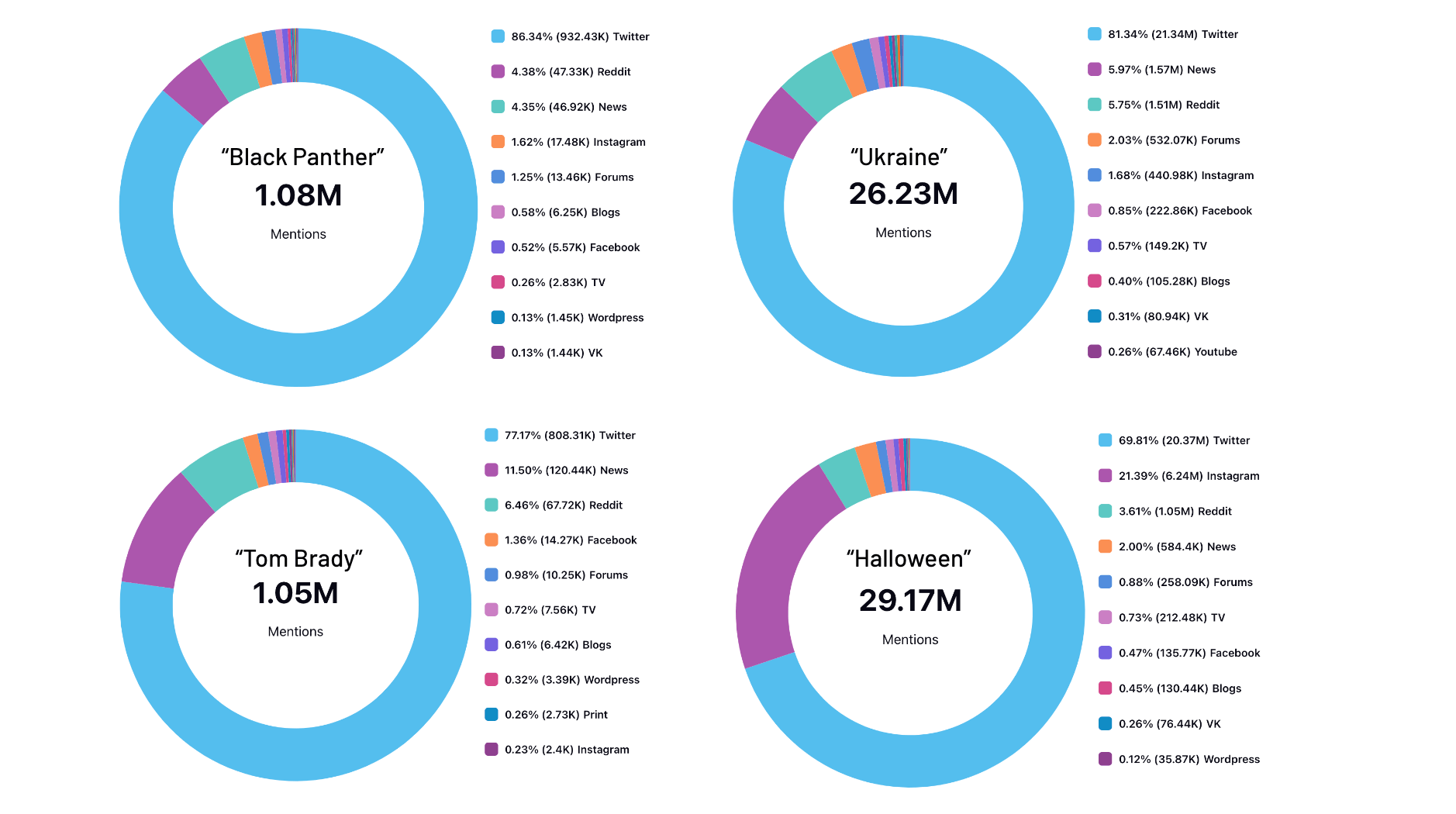
Social Factor
Finding Your Future at SF: Where Growth Meets Opportunity

Note: This post was written before Twitter changed to X and explains how shifts in Twitter ownership altered the analytics viewed at the time.
Today I ran some quick, basic, random queries through my social analytics platform of choice, looking at October 1-30. I pulled the volume breakdown by channel, and you can see the results below. It doesn’t take an experienced Data Scientist to see one theme really quickly: most of that volume comes from Twitter.
Thanks to what happened in October, your social analytics could be off by 70-85% now in November. Trick or…tweet?

Social analytics as a practice has recognized this problem for many years. While many social networks have downgraded or outright eliminated their data APIs, Twitter has (so far) continued to make their platform’s “full firehose” of data available to 3rd parties. In fact, Data Licensing and other similar sources yielded Twitter $571.8 million – 11% of their total revenue – in FY2021. Twitter’s very nature feeds into this ecosystem, as most posts are visible to the public already, and its user experience leans heavily towards easily-searchable text rather than images or video. Microblogging posts are also short, fast, and frequent leading to some inflated impact on volume – in these metrics, a 2,000 character blog post counts the same as a 280 character tweet.
Elon Musk is only a few days in as “Chief Twit,” but changes are already coming fast. Changes to Twitter’s home page for logged-out users were pushed through immediately, and their “blue check” verification system could be tied to a $20 per month paid subscription. And, despite Musk tweeting that there will be a “content moderation council,” use of a certain racist slur increased over 500% in the 12-hour period after the sale closed.

Despite the chaos, these changes shouldn’t make you throw out social analytics entirely. While other channels besides Twitter provide differing levels of data, what you can get is still valuable for hearing the voice of your customers. Here are some important considerations for dealing with our new Twitterverse:
Things may not improve on Twitter overnight, but that doesn’t mean your entire digital strategy and analytics need to be thrown out the window. Take some time to review the bigger picture across all of your social media platforms, review your upcoming digital plans, and stay connected to what’s happening so you aren’t shocked when the changes roll in. Looking for a team keep you up-to-date on what’s going on? Reach out, we’re here to help!

Finding Your Future at SF: Where Growth Meets Opportunity

Transform your Digital Strategy by Using Tech and SaaS for Optimal Resource Utilization

Building Brand Loyalty Through Authentic Human Connection

Sail Through 2025 Social Media Budget Planning with Ease

How Brands Can Navigate Pre-Election Chaos on Social Media

Threads: Is It Worth It Yet?

Jack “Of All Trades” Dorsey Is No Longer on the Bluesky Board

Celebrating Diversity at Social Factor

Coachella 2024: What It Takes to Livestream the Festival on YouTube

How Fort Worth’s Social Factor Is Rocking ‘Human Connection’